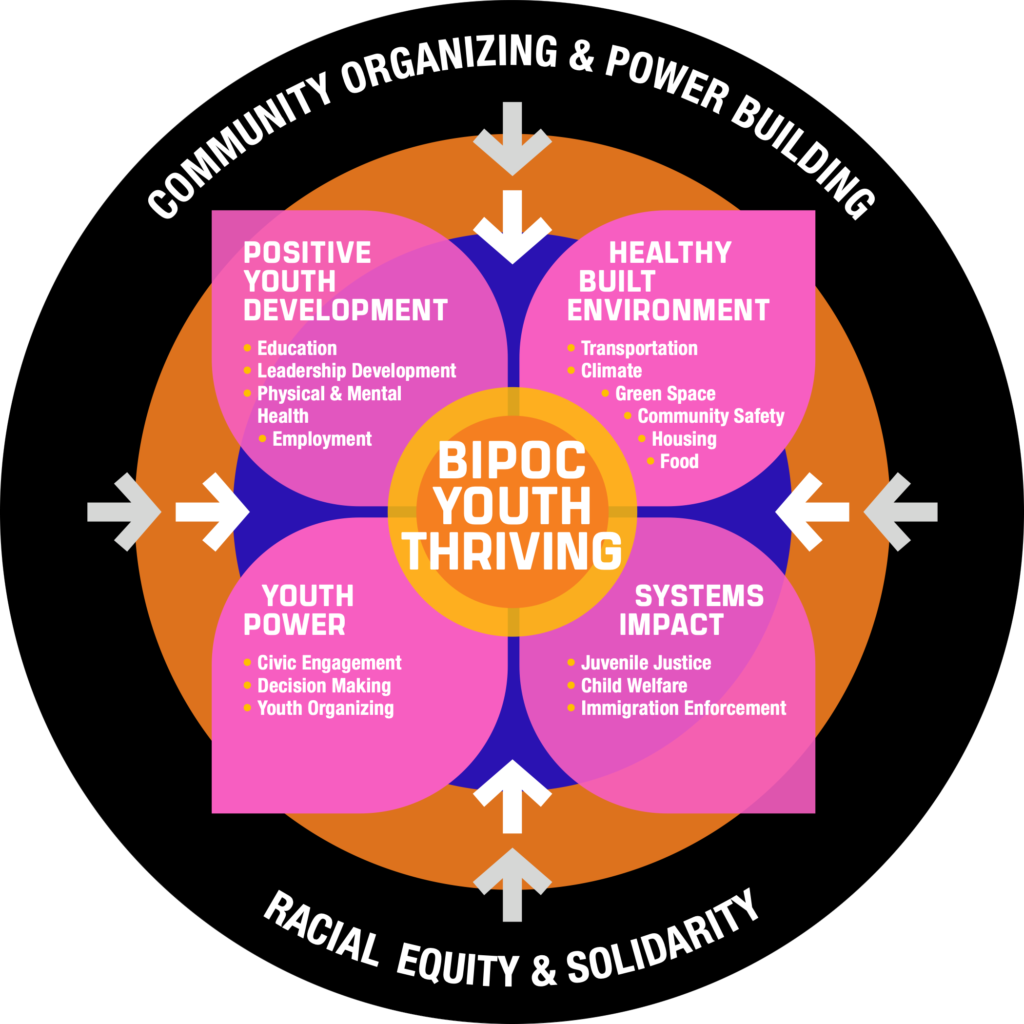The Issue
Recognizing the inequities that L.A.’s youth of color face, Bold Vision developed a framework that could guide systems change and power building efforts to transform L.A. County into a community where youth of color thrive.
The
Problem
The status quo in L.A. County is failing our youth of color (Black, Native America & Indigenous, Latinx, Asian, and Pacific Islander youth). Many of the systems meant to support youth of color fall short of their mission – at best – and often punish youth – at worst. As a result, L.A.’s youth of color experience persistent inequities that get in the way of them meeting their fullest potential.


The
Solution
Grounded in the principle that communities closest to the problems are the ones best suited to develop solutions, Bold Vision started with a robust community engagement process, which was guided by a Community Council comprised of 13 BIPOC-led youth serving organizations.

During the process, Bold Vision engaged over 140 organizations that helped to develop potential areas of focus, critical policy issues, and strategies for creating system change. In addition, a Research and Methods Table of experts conducted research and data analysis to support the development of a set of indicators for ongoing tracking progress through the life of the Bold Vision initiative. Bold Vision also convened experts on immigration, health, disability, and LGBTQIA+ issues, and hosted listening and learning sessions with members representing Black, Pacific Islander, and Native communities to ensure critical populations and needs were represented in the final report. Most importantly, Bold Vision engaged youth throughout the process, including hosting youth focus groups, conducting interviews, and facilitated virtual youth convenings to ground-truth our efforts and understand what youth of color were experiencing.
The community engagement process resulted in an extensive list of potential policy recommendations. From this broad set of policies, youth of color selected their priorities, which the Community Council adopted, with a final few additions. The policies in turn encompass multiple strategies, which are specific proposals for how to change public systems. The final policy and strategy recommendations are included in a Bold Vision final report that presents a racial equity road map that lays out these recommendations within a conceptual guiding framework.
Framework
At its base the Bold Vision framework draws its strength from two key taproots: racial equity & solidarity, and community organizing & power-building. Many of the policy and indicator recommendations are categorized into one of four domains that rest on top of these taproots. BIPOC (Black, Indigenous, and other people of color) youth thriving sits at the center of the framework representing Bold Vision’s central goal: changing conditions so that youth of color can thrive.

Over the past decades Los Angeles’s youth of color and adult allies have built a strong ecosystem of community organizations in recognition that the right research and the right policy by themselves are not sufficient to achieve change: indeed, the only true pre-requisite for transformation is organized community power. Yet, there are still too many communities where youth who see a challenge in their school and neighborhood, and know exactly what needs to be done to fix it, don’t have enough power to create change. With community organizing serving as the Bold Vision framework’s foundation, the report includes a set of recommendations for building the field and expanding capacity of youth organizing in L.A. county. Investments in the youth organizing and power building ecosystem will quickly pay off in more robust organizations, more empowered youth leaders, and more policy victories.
Positive youth development encompasses several distinct spheres: education, leadership development, employment in a career, and the physical and mental health supports youth of color need to develop into thriving adults. Improvements in this domain aim to create a robust set of systems where youth of color’s academic, personal, physical, mental, and economic development is supported, setting them on a path to success.
Healthy built environment is a broad domain, encompassing much of what surrounds youth of color in their neighborhoods: the housing they live in, the food they eat, the transportation and park infrastructure that meets their needs, as well as their ability to be safe from violence and the negative impacts of climate change. For youth of color to thrive, they need to live, learn, and play in thriving resource rich environments.
There are three primary systems that can have the greatest impact on youth of color: the juvenile justice system, the child welfare system, and the immigration system. Each must be deeply reformed. In any youth’s life, there are events that can throw them off track. But the systems that respond to crisis points for youth of color too often do not center their well-being. Only by transforming these justice systems so they support youth of color when they encounter roadblocks on their way to success can we truly say L.A. is a place where youth can thrive.
Youth of color are the ones most familiar with the challenges, hopes, and opportunities that confront them – and so the greater the voice they have in public decision-making, the closer we will be to solutions. This domain focuses on increasing the formal power of youth through civic engagement efforts and system reforms that give them a role and oversight in processes that affect them.
COVID-19 reshaped the L.A. landscape and the lives of youth of color and their families. The framework includes a set of recommendations to address the pandemic’s impact. Action in these areas is necessary to ensure that L.A. meets the needs of youth of color in light of the pandemic and ensures an equitable recovery, which will set the stage for the framework, operating on a longer time horizon, to fundamentally transform L.A. County.
Final Thoughts
In May 2021, the Bold Vision Community Council submitted the final Bold Vision report that highlighted the systems-change framework for transforming L.A. County into a place where intentional and collective action can create a new reality for BIPOC youth throughout the county. The report represented the culmination of an 18-month community engagement process where youth, community leaders, and subject-matter experts provided valuable insight in the development of the framework and final recommendations. To learn more about the framework and recommendations please read the full report.

